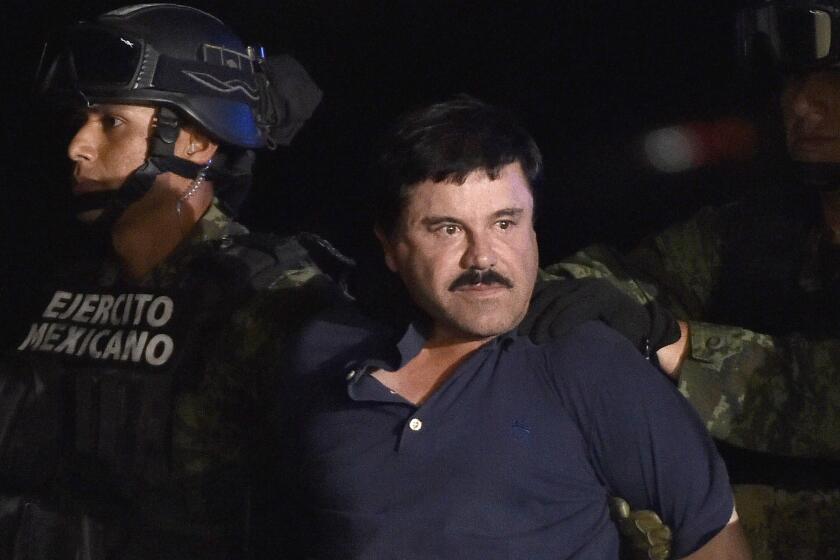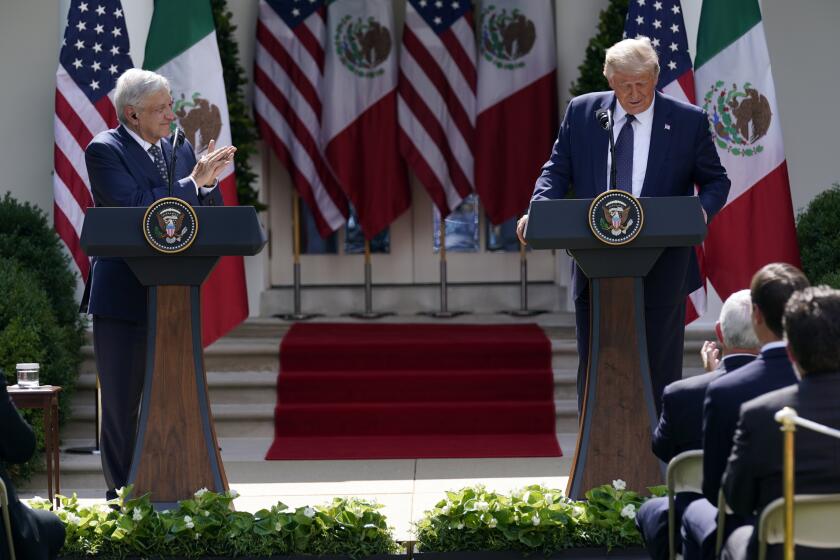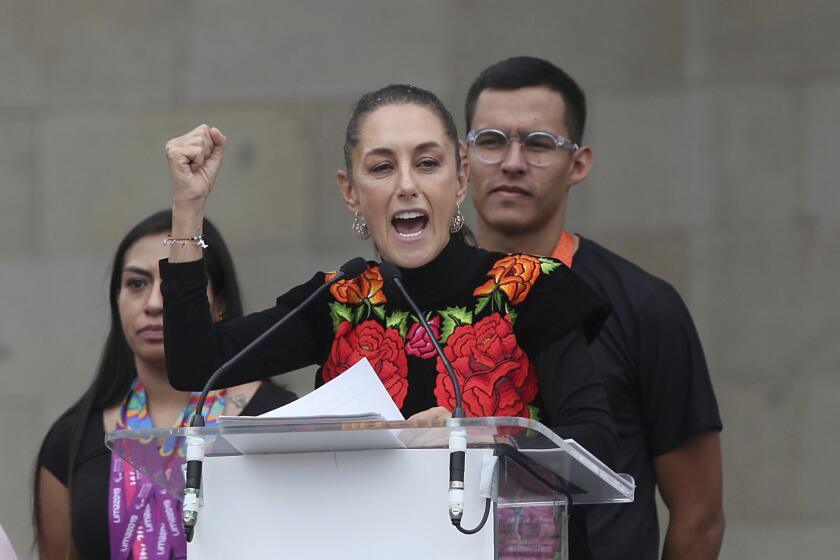MEXICO CITY — Ovidio Guzmán López is currently in a Chicago lockup awaiting trial on drug-smuggling charges after his extradition last week.
His father, Joaquín “El Chapo” Guzmán Loera, infamous founder of the Sinaloa cartel, is already serving a life sentence at a federal supermax prison in Colorado.
Back in Mexico, of course, organized crime continues to wreak havoc.
But how many people are on the payrolls of the Mexican cartels?
Now researchers have come up with an estimate: 175,000. That figure, which would make the cartels the country’s fifth-largest employer, has steadily risen during the last decade, according to their study, which was published Thursday in the journal Science and relied on a variety of data to build a mathematical model of the workforce.
“It’s very important to understand the size of the problem,” said lead author Rafael Prieto-Curiel, a postdoctoral researcher at the Complexity Science Hub in Vienna. “It helps put the issue into perspective.”
Other researchers not involved in the study questioned the employment estimate, given the lack of precise data and the many ways that the workforce might adapt to changes in the drug trade.
“It’s really problematic where they get their data from,” said Benjamin Smith, a history professor at the University of Warwick in England.
Though cartels have been chronicled in television series, books and high-profile criminal cases, much about them remains unknown. Estimates of annual profits start at $6 billion and spiral upward.
And cartels long ago branched beyond drug trafficking into other lucrative rackets, including extortion, kidnapping, fuel theft and migrant smuggling. That implies a vast economy — and a huge labor force.
The head of the U.S. Drug Enforcement Administration, Anne Milgram, told Congress in July that Mexico’s two most powerful criminal organizations — the Sinaloa cartel and the Jalisco New Generation cartel — had almost 45,000 members, associates, facilitators and brokers in more than 100 countries. Mexican President Andrés Manuel López Obrador, a frequent skeptic of Washington’s drug policies, scoffed at the numbers.
For the Science paper, researchers crunched statistics on incarceration and casualties during the last decade to arrive at their estimate. They found that Mexican cartels must recruit 350 to 370 people each week to replenish the ranks diminished by losses from arrests and murder.
Being a cartel worker is “like playing Russian roulette,” Prieto-Curiel said.
The study cites a greatly fragmented panorama of 150 cartels. Many are small regional bands that are not necessarily affiliated with sophisticated, transnational syndicates.
The estimate of 175,000 “active cartel members” in Mexico at the end of 2022 captures both full-time and occasional employees, Prieto-Curiel said. Their ranks include peasants cultivating opium poppies, pistoleros guarding methamphetamine and fentanyl labs, and capos running global contraband networks.
The authors acknowledged that their findings are “imperfect.” Researchers made an “educated guess” as to what share of murder victims and inmates were cartel members, Prieto-Curiel said.
Smith, author of the 2021 book “The Dope: The Real History of the Mexican Drug Trade,” pointed out that the model fails to capture the number of police officers, military personnel, politicians and other officials on cartel payrolls.
He also questioned the value of using incarceration and homicide numbers in a country where relatively few murderers are ever jailed. And, he said, identifying cartel members among the more than 100,000 people listed as “disappeared” in Mexico seems questionable.
Still, he called the study a “useful exercise,” as it provides “an indication of the depth and extent of organized crime in Mexico.”
Using their mathematical model, the authors of the study concluded that increasing education and job opportunities for young men — who make up the majority of recruits — is the only means to thwart the cartels and reduce violence.
“We have made cartels desirable,” Prieto-Curiel said, noting the financial allure and the romanticizing of drug trafficking in popular culture.
The authors ruled out mass incarceration — the controversial policy that El Salvador’s president, Nayib Bukele, has implemented in his battle against gangs — as a feasible strategy in a nation as large as Mexico. The model suggested that the number of cartel members would continue to rise even if imprisonment doubled.
The paper did not address how to diminish U.S. demand for narcotics, the engine driving drug trafficking.
In an article accompanying the study, three U.S.-based experts called the paper an “important contribution.” But they faulted it for not recognizing the adaptability of organized crime, saying that cartels have the financial muscle to raise wages or take other steps to offset potential personnel shortfalls.
“Cartel members are not billiard balls or atoms locked into mechanistic reactions to external shocks,” they wrote. “Cartels are adaptive organizations often run by intelligent people who can alter behavior in response to changing conditions.”
They also questioned the conclusion that cartel staffing levels have been rising when, they wrote, “drug market trends might suggest the need for smaller, not larger staffs.” The legalization of cannabis in many U.S. states has reduced demand for marijuana from Mexico, while the emergence of the synthetic opioid fentanyl may have trimmed the market for Mexican-produced heroin.
“Perhaps cartel labor is increasingly employed to defend drugs and workers from attacks by rivals, or to intimidate officials, not to produce or distribute drugs,” the accompanying article stated.
Cartel activities are widely viewed as contributing to the weakening of democracy in Mexico, a country of 127 million, while escalating U.S.-Mexico tensions.
Cartels are the major driver of rising violence. In 2021, the paper said, Mexico recorded 34,000 intentional homicides, more than quadruple the total in 2007, when the government launched a futile crackdown on cartels.
Fentanyl — churned out in clandestine Mexican laboratories — has flooded into the United States in recent years, causing tens of thousands of deaths and straining relations between the countries.
Some Republican lawmakers have even backed the idea of dispatching U.S. troops to combat Mexican cartels.
















